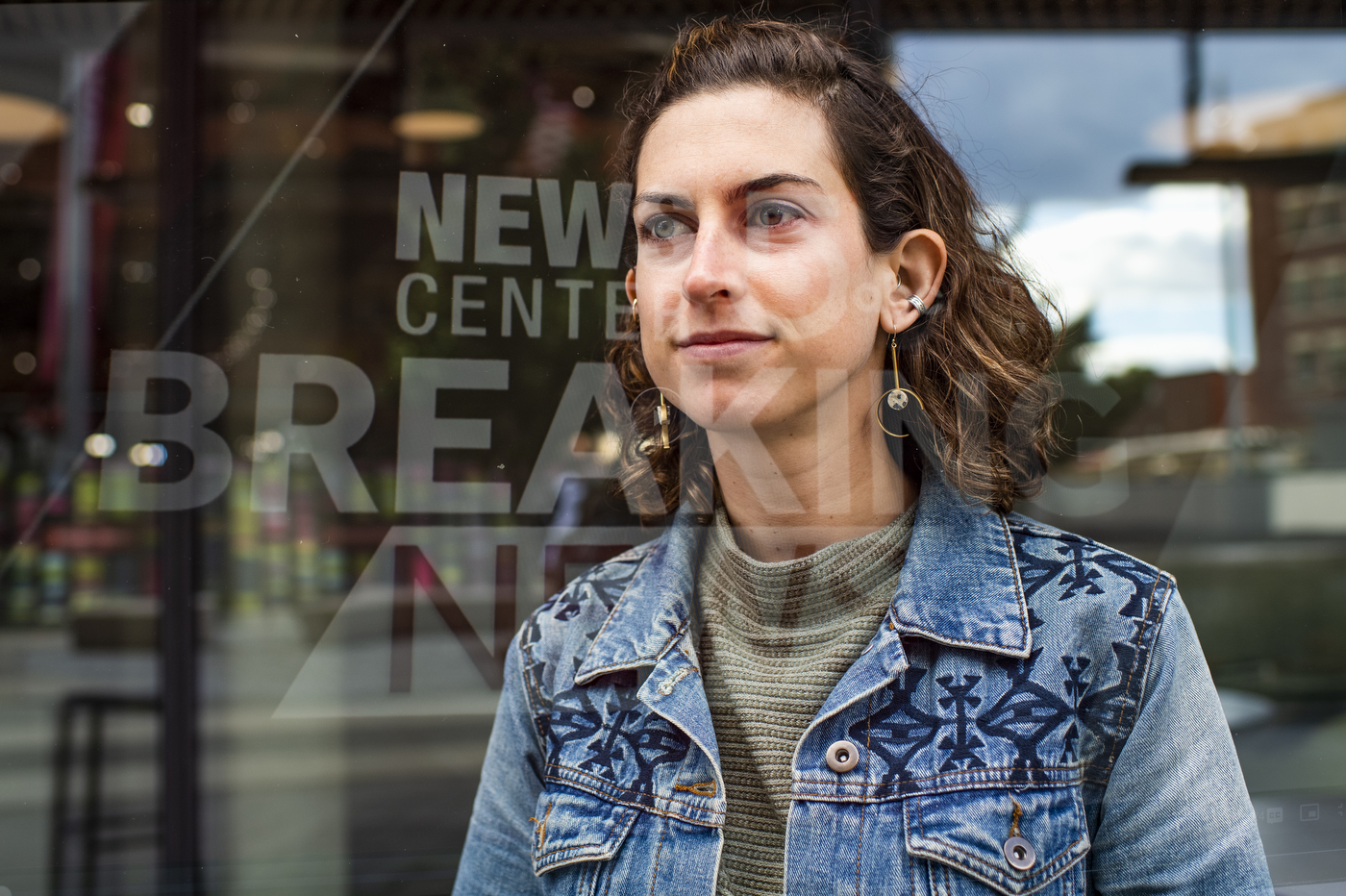Local TV news has become ‘stale.’ Here’s how networks can liven up the broadcast

Local television news remains a trusted source of information for most people, especially during the pandemic when people were tuning in in droves. But the format of the typical newscast has become stale and could use an injection of video innovation to lure younger viewers, according to Northeastern research.

TV news stations are missing out on an opportunity to break the stale format and liven up the broadcast as a way to engage more with younger audiences, says journalism professor Mike Beaudet (right), who worked on a research project with fellow journalism professor John Wihbey (left). Photo by Matthew Modoono/Northeastern University and Courtesy Photo
“The biggest problem with local TV news is they’re doing things the same way that they’ve been doing them for decades,” says Mike Beaudet, a journalism professor with nearly three decades in television. “The format is the two anchors who are sitting up there, tossing it to the reporters. There’s the happy talk and then you get some weather and then sports.”
The industry is missing out on an opportunity to break the mold and liven up the broadcast as a way to engage more with younger audiences, explains Beaudet, who worked on the project with fellow journalism professor John Wihbey and student Anna Campbell, who is finishing up the media innovation master’s program.
Since 2017, researchers have been studying ways for TV news stations to improve storytelling in general, and their latest project found that compelling digital content such as animation and graphics are an effective complement to the storytelling process.
Rich content is also likely to entice young adults, a valuable demographic that is less likely than their older counterparts to catch the news from a couch, preferring the freedom of watching news when and where they want to.
“Everyone’s carrying a TV in their pocket,” Beaudet says of smartphones. “It’s just a great opportunity to rethink the broadcast.”
Northeastern researchers were curious to see if more people would tune in if animation were used to convey a story’s main points. The experiment involved teaming up with WLS-TV ABC7 Chicago and WCVB-TV NewsCenter 5 Boston, where Beaudet works as an on-air investigative reporter.

Anna Campbell, who is finishing up the media innovation master’s program at Northeastern, worked on the animation research project with journalism professors John Wihbey and Mike Beaudet. Photo by Alyssa Stone/Northeastern University
Animators, known in industry lingo as visual content producers, were hired for one-year fellowships courtesy of financial support from the Stanton Foundation, a private U.S. entity founded by former CBS president Frank Stanton.
One thousand volunteers in the Chicago and Boston markets who were shown four news stories for the research said that they preferred the animated versions of the stories over the conventional ones by a 24 percent margin. They gave the animated stories a thumbs-up upon initial impression and categorized them as more “interesting to watch.”
The animated video versions also beat out traditional TV news segments in specific descriptive categories such as “well crafted,” “visually interesting,” “innovative,” and “direct and to the point.”
Viewers indicated they felt that the animated stories more often included “the right amount of detailed information” as opposed to overloading them with granular detail or leaving them with more questions than answers, according to the research.
As one viewer put it, the animated version of a story about a COVID-19 super spreader event in Chicago “more clearly showed how many people [were] infected” with the coronavirus. A story about a small plane crashing off the freeway was described as “easy to follow” and “familiar” when maps and text-based graphics showing the location and time of the incident were added.
Beaudet said the findings weren’t a complete surprise but a pleasant one in that the visuals weren’t the end game in the reporting.
“It was actually helping people better understand the stories,” he says.
The findings caught the eye of the National Association of Broadcasters, which chose the Northeastern study as one of two winners in an innovation contest. Beaudet will present the findings to TV station owners attending a large NAB conference in April of 2022.
“People who work in this industry care about what they’re doing, but they also recognize its shortcomings,” he adds. “The NAB show is going to give us this huge opportunity to reach so many executives and people who work in television stations all over the country.”
Television industry executive Seth Geiger says, “the power of animation is significant,” according to a video that accompanied the research.
The recommendation to hire animators to improve the look and feel of stories is one of several important steps that stations should consider when looking at ways to make newscasts more contemporary, Beaudet says. The next likely phase of the Northeastern research will look at ways of improving content delivery to mobile devices.
“It would be a super app that could really be dynamic and something that people of all ages would want to get into,” says Beaudet.
For media inquiries, please contact media@northeastern.edu.





